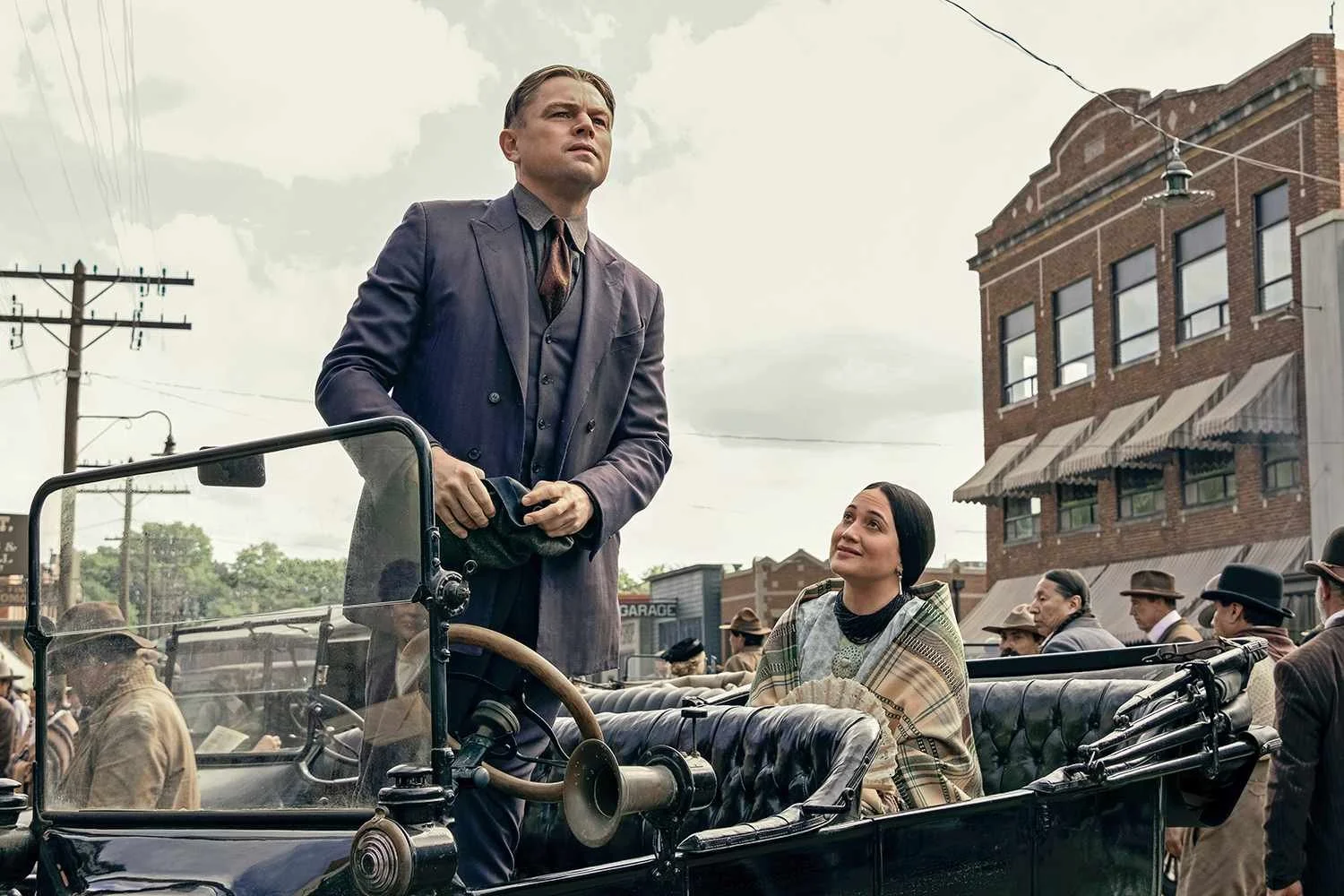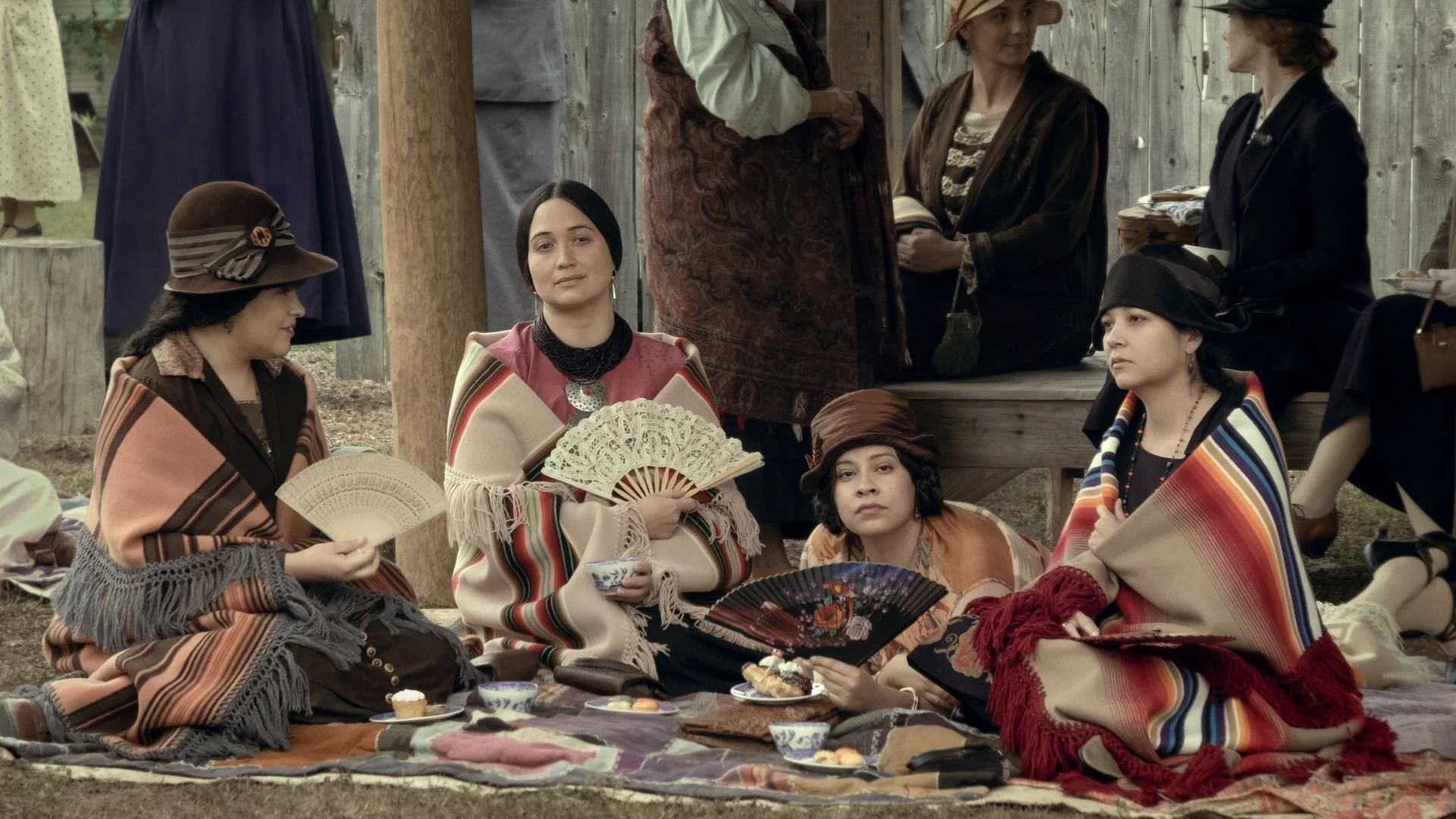“Killers of the Flower Moon” An Ambitious, Retrospective Western
Killers of the Flower Moon is an ambitious epic, spanning decades with a runtime of three hours and twenty six minutes. Despite that, the film feels intimate and personal throughout. It’s adapted from the nonfiction novel by David Grann released in 2017, The Osage Murders and the Birth of the FBI. Dozens of the Osage people, rich from oil drilled on their land, were killed in unsolved murders. These killings - but mostly a $20,000 donation from the Osage to the federal government after pleading got them nowhere - gave cause to bring in the newly formed FBI on one of their first major investigations.
Grann reportedly spent nearly a decade performing research and interviews to bring the story to light and organize all available information into a comprehensive novel. Everything I’ve read indicates that director Martin Scorsese gave every effort to tell the story with the blessing of the Osage people, working with them behind and in front of the camera, to bring this story to light in a way respectful to their people.
In early drafts of the screenplay, Leonardo DiCaprio was set to play the FBI agent who leads the investigation into the murders. The film would’ve focused on his character arriving after the murders occurred, and would’ve played out as a police procedural as they work to catch those responsible. Scorsese felt it was too focused on the FBI agents and was concerned about framing it as a mystery. In an interview with Sight and Sound, he said “I then realized it wasn’t a matter of who did it, because the minute you see these characters on screen, you’re going to know who did it. It’s a matter of who didn’t do it.” After consulting with the Osage people, Scorsese and screenwriter Eric Roth rewrote the script so that the focus is between Ernest Burkhart, a World War One veteran played by DiCaprio, and Mollie Kyle, the Osage woman he marries, played by Lily Gladstone.
An argument could be made that the story should be told entirely from the Osage people’s perspective, which is something I’d like to see someday. Scorsese, wisely I believe, knows that that isn’t his story to tell, and instead focuses on the culpability of the settling white people who flocked to the area to get their money.
We arrive in town through Ernest, in an effective opening that establishes the time period and the wealth of the Osage people. White people are driving their new cars for them, carrying their bags, cooking and cleaning for them. These are images we aren’t accustomed to in Westerns, and carry a sense of doomed pride, as we know it won’t last long. He meets his uncle, Robert De Niro’s character William Hale, who gets him a job as a cabbie and eventually suggests he romantically pursue Mollie Kyle. Ernest isn’t the brightest and is easily manipulated by others for their purposes, taking actions that damage his wife’s family and people, all the while seeming to genuinely love his wife. Is he lying to her, or himself? When the end result is identical, between ignorance and cruelty, does it make a difference?
This is a long, brutal movie, told with performers at the peak of their craft. Robert De Niro plays William Hale, Ernest’s uncle, and gives one of the best performances in his career, especially impressive as he’s just turned 80 this year. Jesse Plemons plays the lead FBI agent Tom White in a smart and stoic manner, we don’t get inside his head, but see his mind work from a distance. However, it is Lily Gladstone’s performance that has stuck with me the most. Her quiet moments of steely reserve and intelligent observation, punctuated by fierce emotion, are a highlight of this film.
It’s a long movie that earns its length, using it to tell the story with a depth that wouldn’t be possible were it shorter. Not once did I feel a scene had ran too long, or lose interest for even a moment. Scorsese and his editor, Thelma Schoonmaker, who has edited every film of his since Raging Bull in 1980, keep the viewer immersed and involved throughout every minute. Not to say this is an action packed film, but the movie ebbs and flows in waves that naturally pull you toward its conclusion. Scorsese uses silence in ways few other films do, and the contrast between the louder moments of celebration or rage to quiet intimacy or reverence give the viewer the impression that they never know what scene is coming next, or how exactly the current moment will end.
Lastly, as it closes, the film finds a way to address the inherently exploitative nature of making a movie about such a real world tragedy. Filmmaking is inherently a business, and production studios want nothing more than to profit off the films they make. While this is an important story to tell, the morality of profiting off the story in such a fashion can be dubious. They manage to make it clear that this movie is no exception, while also communicating that it is something Scorsese feels deeply passionate about, and a story he felt needed to be told in this fashion, that is, as a Western.
The Western is an important but often problematic genre in cinematic history. Studios made many because were dirt cheap to make, which let productions experiment and get creative with their plots and storytelling. However, they could also feature harmful depictions of indigenous people and use the reinforcement of Manifest Destiny to rewrite the truth of America’s bloody Westward expansion. This film manages to tell its story while being aware of and reconciling with that fact in a way that wouldn’t have been possible in the hands of a lesser filmmaker. It is an impressive accomplishment and one of the year’s best films.
Here's a link to the aforementioned Sight and Sound interview, which is worth a read if you’re interested in how they developed the story or the involvement of the Osage people.

